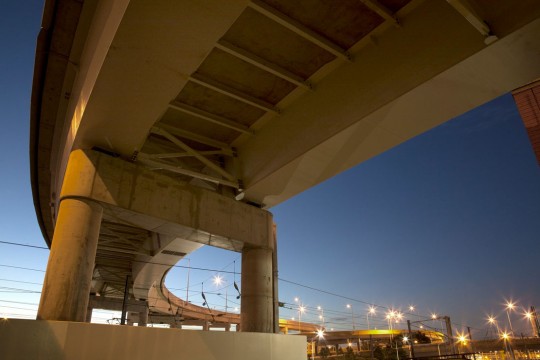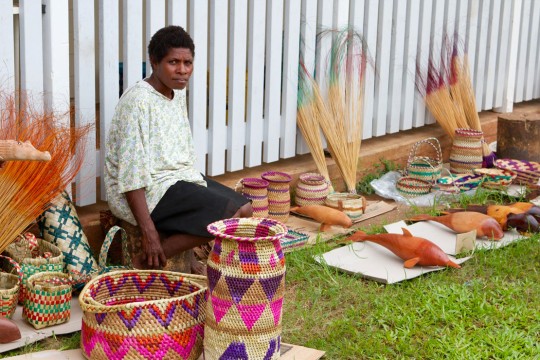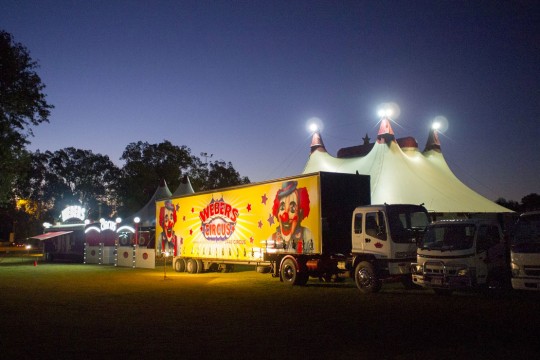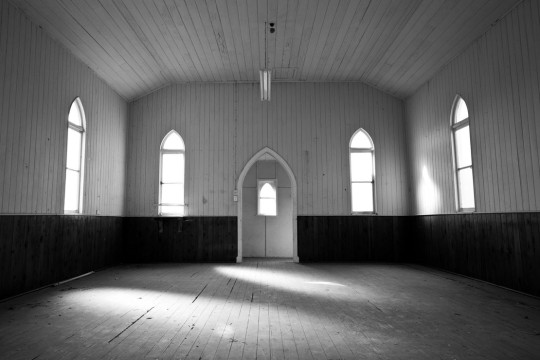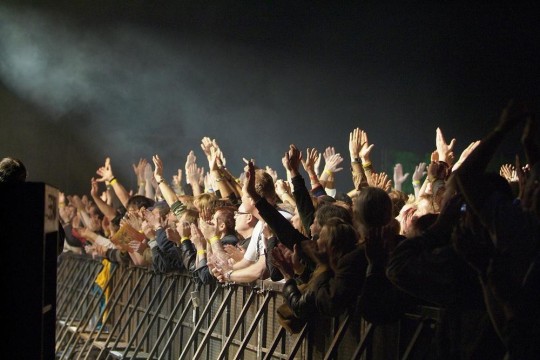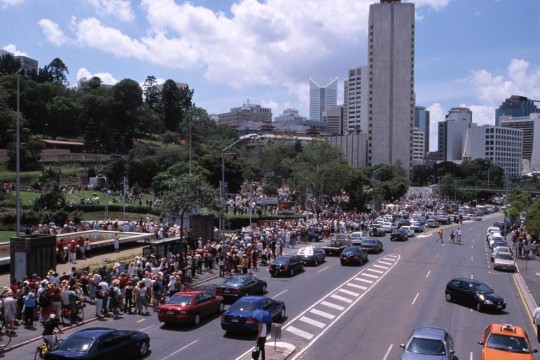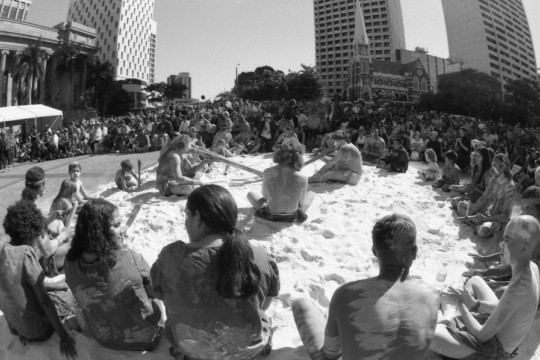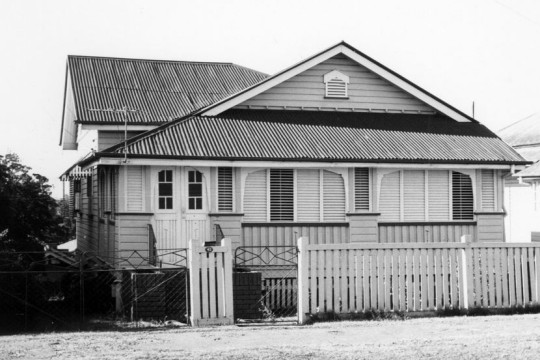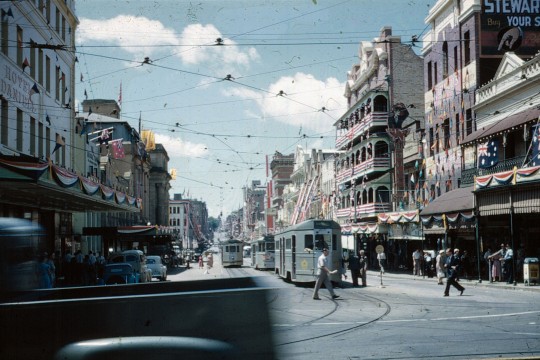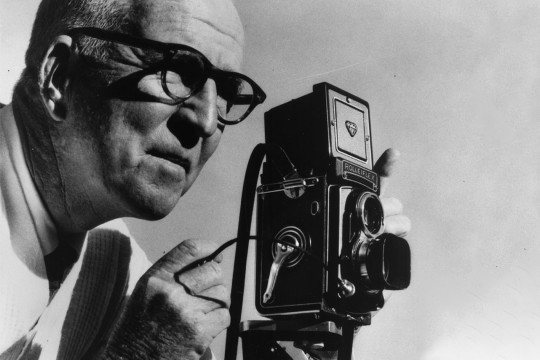Twenty
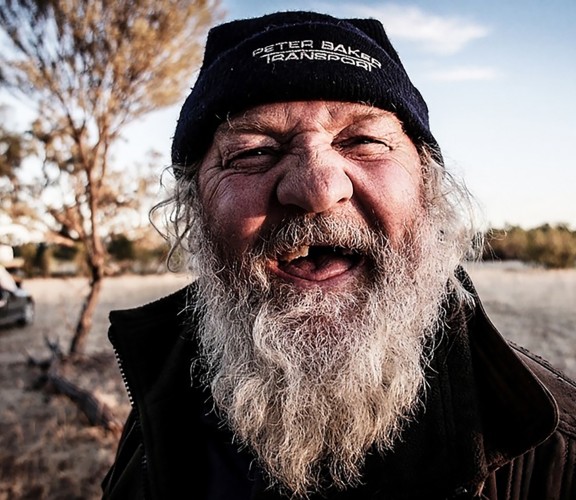
Twenty
Two decades of Queensland photography
Online exhibition
twenty.slq.qld.gov.au
#slqTwenty
Twenty is a photography exhibition reflecting on the last 20 years in Queensland. Documentary photography plays a vital role in capturing the events and experiences that shape our lives.
Twenty reveals a story of a changing Queensland—one that still has echoes of its past but is also embracing a more diverse and tolerant future. Looking back, the year 2000 seems a simpler time. Over the last two decades, society has undergone seismic shifts. Immerse yourself in this rich and complex history.
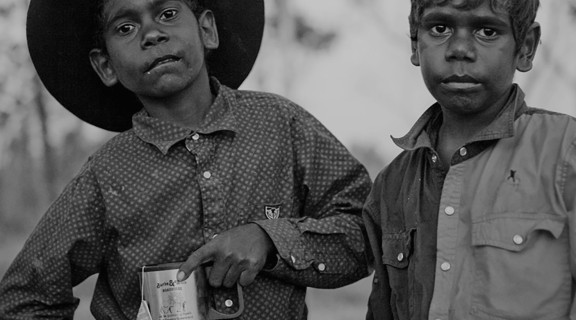
Explore Twenty
Explore the online photography exhibition today.
Themes
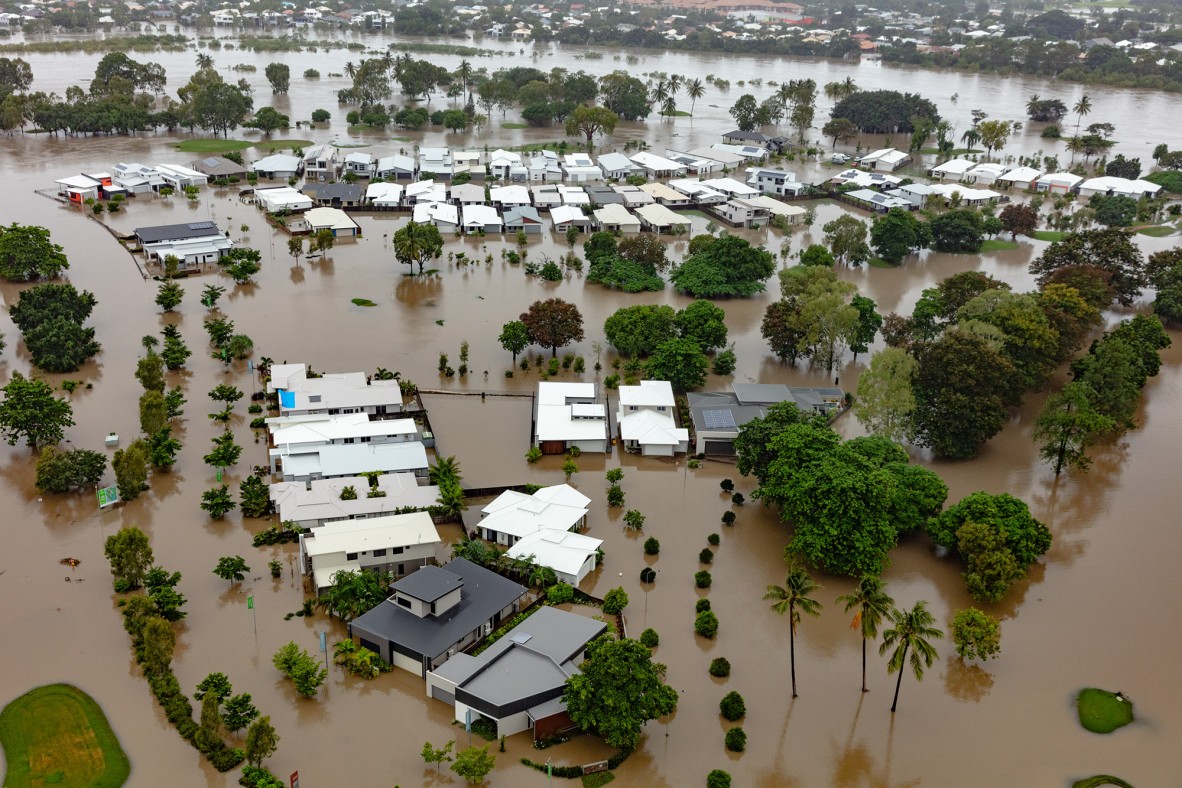
Wild weather
Queensland is no stranger to extreme weather. The last 20 years have seen some of the worst events to affect the state.
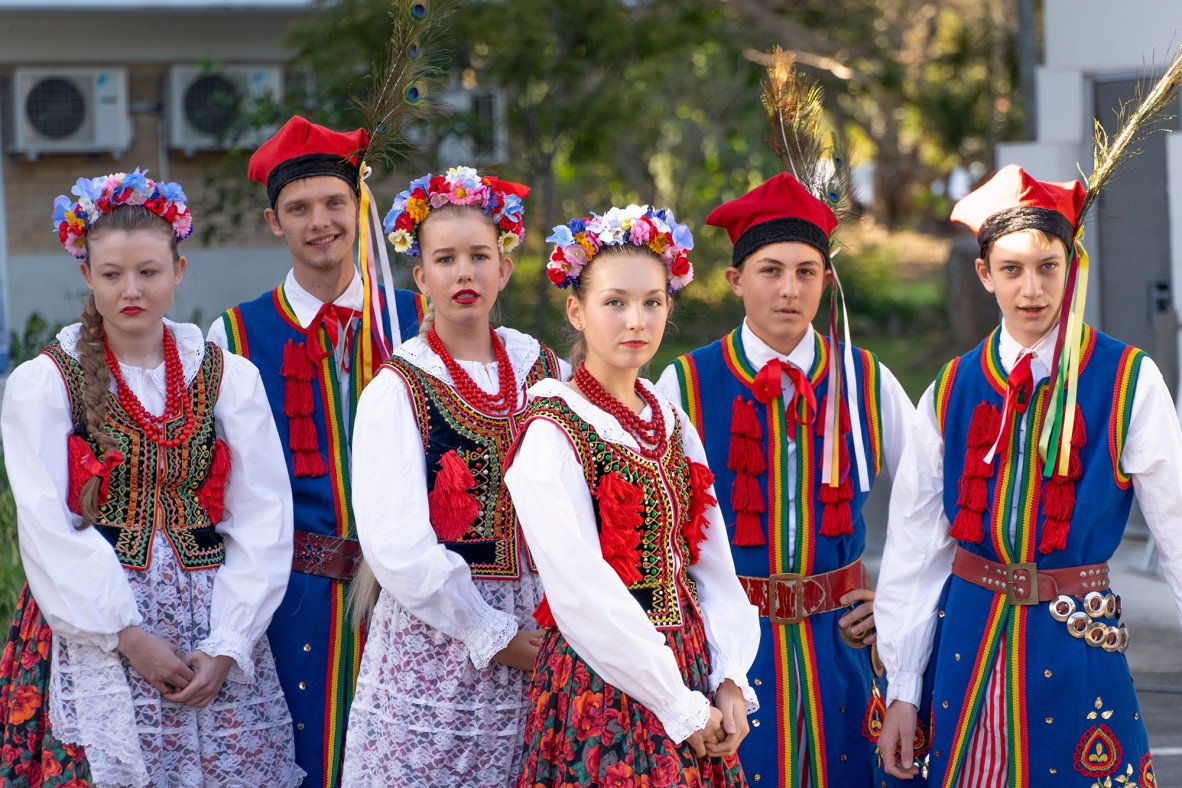
Community
The Queensland community spirit is palpable in clean-up efforts following natural disasters, in protests around human rights and environmental concerns.
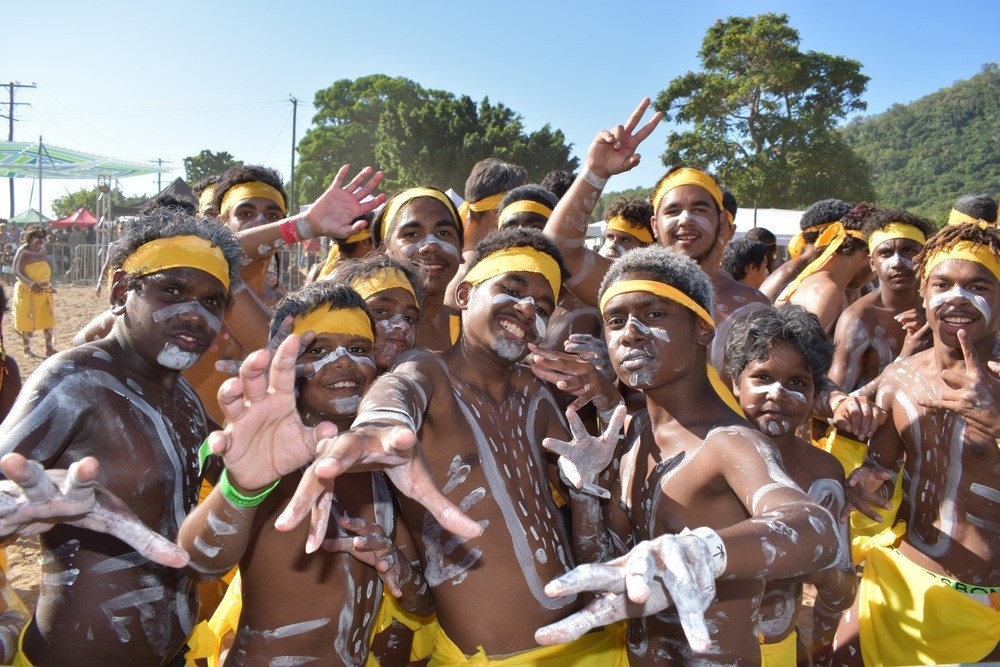
Art and celebration
While iconic festivals such as Livid (1989–2003) might have fallen away, the strength of the arts and cultural scene continues to flourish.
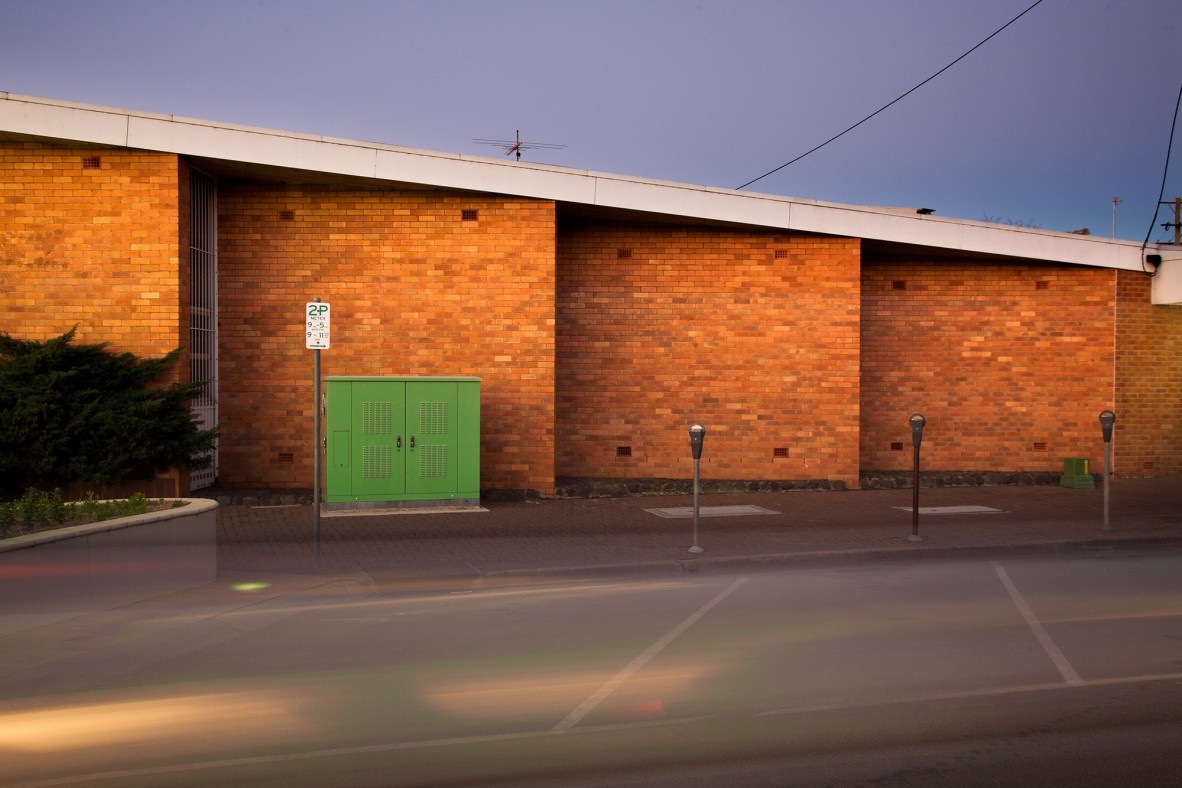
Architecture
While Queensland is known for its humble timber-and-tin vernacular, the last two decades have seen dramatic changes.
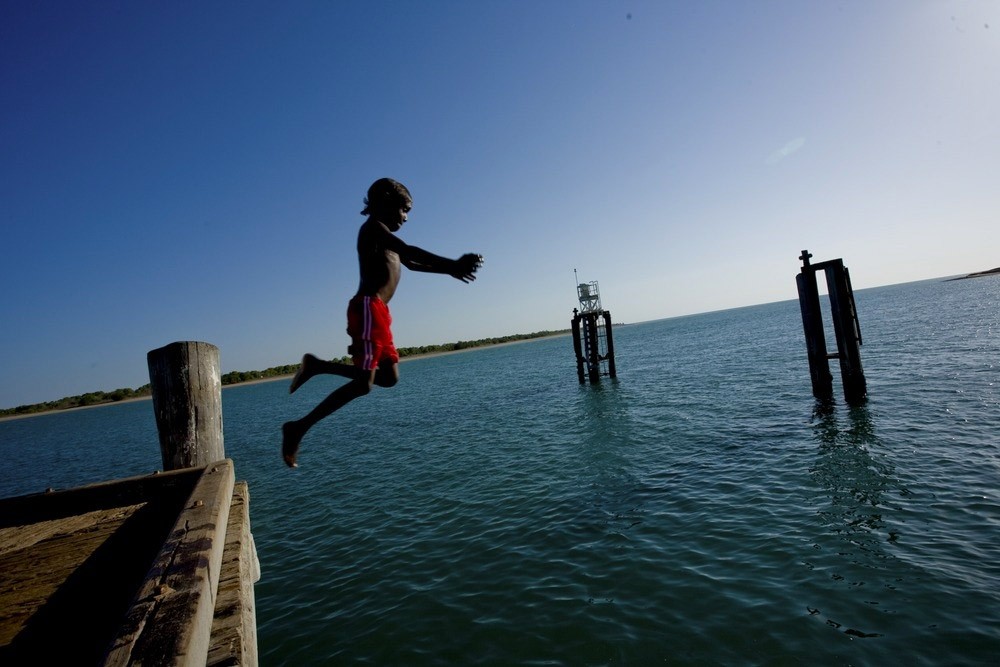
Beyond Brisbane
Queensland’s geographical features are hugely divergent—from deserts to rainforests, from coral reefs to mountain ranges.
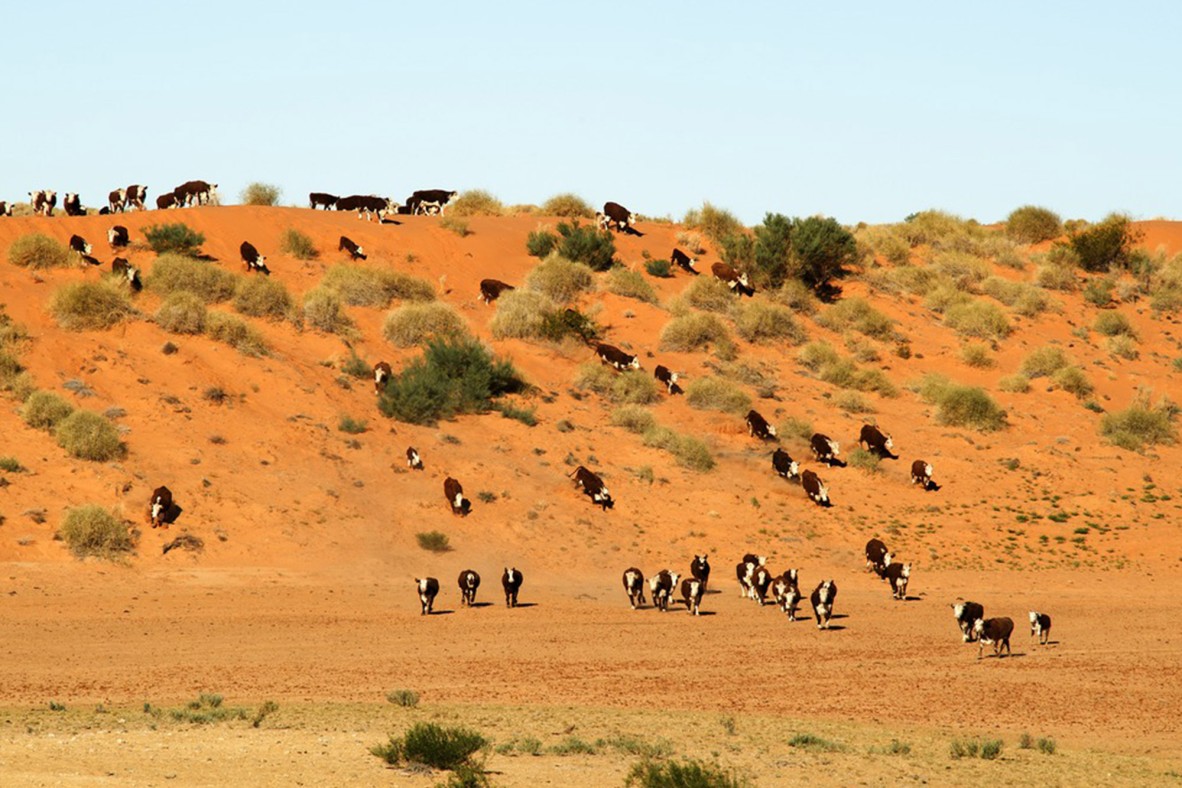
Working life
Unlike most Australian states, more than half of the Queensland population lives outside the greater metropolitan area of Brisbane.
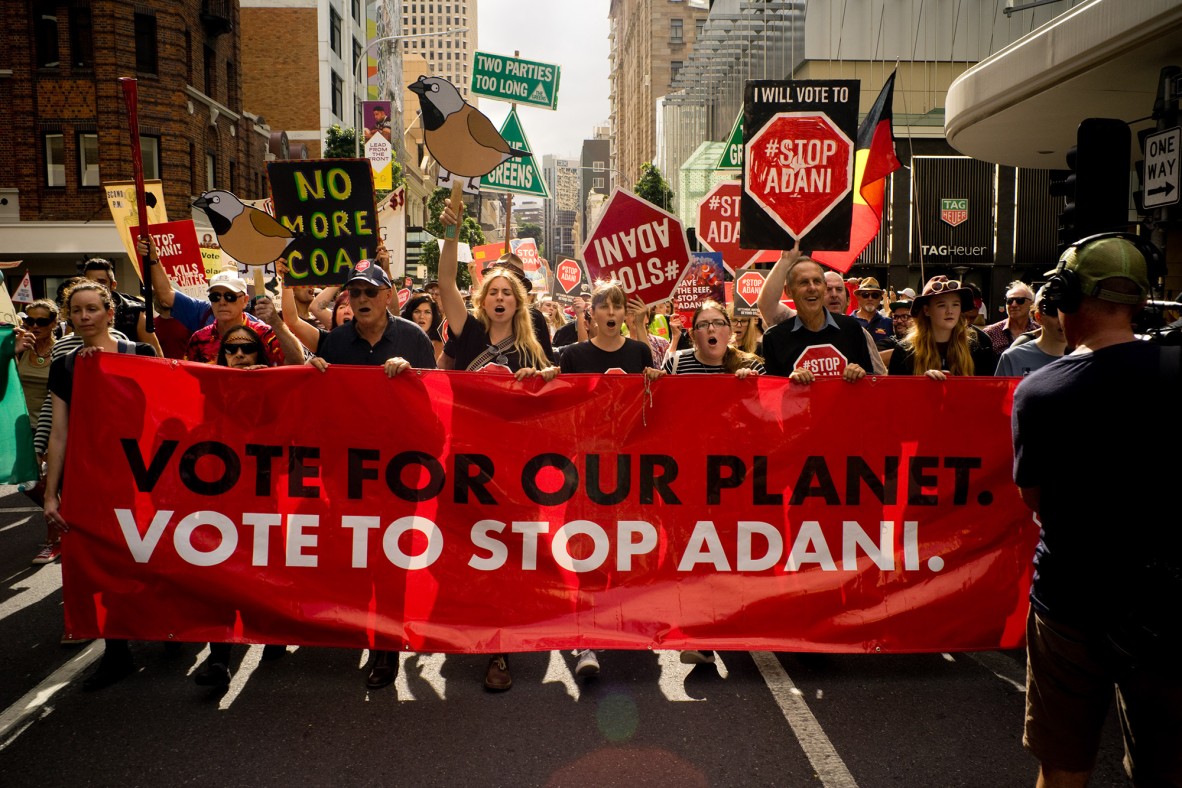
Politics and people power
Generations of Queenslanders have fought hard to win many of the civil, social and human rights we enjoy today.
Essays
Photographers
The 56 photographers featured in Twenty represent the incredible diversity of Queensland’s documentary photography community. Some are well-known, some are emerging, some have been practising their craft for years relatively unknown. Some studied photography, some are self-taught. They are all dedicated to documenting Queensland and their work has allowed State Library to develop an astonishing visual archive of our state in the contemporary era.
Michael Aird
David Allen
Anthony Anderton
Patricia Baillie
Stephen Booth
Hamish Cairns
Brian Cassey
Darren Clark
Suzanna Clarke
Jacqueline Curley
Rodney Dekker
Heidi Den Ronden
Jo-Anne Driessens
Justin Edwards
Leif Ekstrom
Liss Fenwick
Peter Fischmann
Amanda Gearing
Juno Gemes
Craig Golding
John Gollings
Troy Hansen
Josie Huang
Kelly Hussey-Smith and Alan Hill
John Immig
Reina Irmer
Daryl Jones
Cassandra Kirk
Marko Laine
Cameron Laird
Madeleine Marx-Bentley
Dominique Normand
Glen O’Malley
Chris Osborne
Renee Eloise Raymond
Mick Richards
Hannah Roche
Troy Rodgers
Brian Rogers
Dean Saffron
Jeremy Santolin
Cathy Schusler
Sarah Scragg
Arthur Liberty Seekee
Clare Sheldon
Doug Spowart and Victoria Cooper
Reuben Stafford
Brodie Standen
Jason Starr
Richard Stringer
Garry Taylor
Shehab Uddin
Alf Wilson
Marc Wright
Michael Aird
b.1963 -
Resides Southport QLD
I got my first camera in 1982 and I have been taking photos ever since. Photography became central to my career when I began working in the area of arts and cultural heritage in 1985. I photograph the places I visit and the people I meet. My photographs document the complex aspects of urban Aboriginal history and culture.
I have curated over 30 exhibitions including; Portraits of Our Elders (1993) a Queensland Museum travelling exhibition, Transforming Tindale (2012) at the State Library of Queensland, Captured: Early Brisbane Photographers and Their Aboriginal Subjects (2014) at the Museum of Brisbane. My work is held in the numerous collections, including the National Gallery of Australia, the Queensland Art Gallery and the Queensland Gallery of Modern Art. I am currently an ARC Research Fellow and Director of the University of Queensland Anthropology Museum.
David Allen (State Library Queensland)
b.1960 -
Resides Palm Beach, Gold Coast QLD
COVID-19 has had a huge impact on life on the Gold Coast. The closure of the borders has been particularly troublesome due to the tight integration of Tweed Heads (NSW) and Gold Coast (QLD) services and businesses. In addition, the Gold Coast’s main source of income is tourism and businesses have suffered during the heavy COVID-19 restrictions.
Anthony Anderton
b.1960 -
Resides Brisbane QLD
anthonyanderton.com.au
I have found the only predictable thing in photography is its unfailing unpredictability. Whether I embark on what seems a structured and clearly defined project - or simply walk out for a session of random street photography – I will inevitably be surprised. Even the most painstakingly planned concept comes with a guarantee of unexpected and unforeseen outcomes. Making images seems to end up like clutching at a dangling thread of the original idea; and the results vary wildly, from disappointment to astonishment.
When my creative ideas seem to be unravelling in front of me I try (with mixed success) not to lose heart and just grab hold of the most promising looking thread – and hang on – at least until I can grab another. My current photographic threads include retracing the 1900 kilometre journey of a Queenslander across China to Myanmar, and wandering the streets of Brisbane photographing things I have walked or driven past countless times – things I have looked at everyday, but have never really seen.
Patricia Baillie
b.1937 -
Resides Glebe, Sydney NSW
patriciab.com
I enjoy most photographing people. My home is in an inner-city Sydney area and it is a truly rich environment to find fascinating and varied people. But in my visits to the lovely Gold Coast I became interested in the changes in the built environment. Lovely old buildings and neighbourhoods were sadly vanishing. These cranes tell some of the story and the pace of change in the commercial centre of Cavill Street, Surfers Paradise.
Stephen Booth
b. 1966 -
Resides Bardon, Brisbane QLD
stephenboothphotography.com.au
I have been shooting live music for over 25 years. I studied film and photography at Griffith University/Queensland College of Art. I worked in public radio for a time, lots of friends were musicians, worlds collided! Shooting exclusively on 35mm film I would shoot three or four shows a week, processing and printing my own film after shows in my home darkroom, gradually I started submitting photos to street press, Timeoff and Rave, then ultimately national and international magazines, Rolling Stone, New Musical Express (NME)… I ended up working for artists, labels, promoters and festivals. It’s been great fun, and a brilliant excuse to see literally thousands of great shows over the years. Picking up a camera gave me access to a world that would have otherwise remained a mystery, it’s taken me around the world, and landed me in situations that never would have happened otherwise!
Hamish Cairns
b. 1981 -
Resides Brisbane QLD
hamishcairns.com
You wanna be in the fight, no matter how tough it gets.
Brian Cassey
Resides Cairns QLD
briancasseyphotographer.com
A passion for cameras and film as a child led to an early start as a professional photographer in the UK covering the real ‘football’. For reasons too lengthy to go into, Australia seemed a good idea in my early twenties.I found myself in the tropical city of Cairns and have since been based there covering news, sport and features for many Australian and International media. My work has taken me to much of the planet…and I have covered many amazing stories. Lucky aren’t I…
Darren Clark
b. 1968 -
Resides Geelong VIC
darrenclark.com.au
I am a 53-year-old self-funded documentary photographer living in Geelong, Victoria. I attended photographic studies at a college in Melbourne for three years and completed my Diploma of Illustrative Photography in 1998. My work is held in every State and Territory Library’s collection in the country. I have also just had a series of images looking at an Indigenous ANZAC Day collected by the Australian War Memorial in Canberra.
I am passionate about life, travel and photography, which for me are inseparable. I’ve been traveling around Australia since 1999, which has been the catalyst for the creation of my compelling body of work which provides an intimate journal of my life.
My personal quest has been to question the traditional and cultural stereotypes used by the mass media to define the ‘typical’ Australian. I’ve spent the last 20 years of my life documenting a broad cross section of Australian culture, looking at how these stereotypes influence the way we see ourselves and questioning if they are still relevant to modern Australians.
Suzanna Clarke
b. 1961 -
Resides Fez, Morocco
Instagram: suzanna.clarke13
At the age of 14, I started taking and processing black and white photos in my darkroom, and went on to become a photojournalist and author. I love being let loose with a camera, to explore and interpret the essence of a subject. Most of my portraits are taken in context; to give the viewer a greater understanding and sense of connection. I usually have a good chat with people beforehand, to establish a rapport.
“The Gift of Presence” exhibition was also a gift to me – I found it fascinating to meet the subjects, to give a glimpse into their lives and their views on reconciliation. The printed portraits were huge. It was like walking through a forest of people.
As well as portraits, I do architectural and interior photography; street photography and landscapes. Originally from New Zealand and Australia, I now live and work in Fez, Morocco and Bordeaux, France.
Rodney Dekker
b. 1974
Resides Melbourne VIC
rodneydekker.com
In 2008, I flew from Melbourne to Emerald on a whim to document the flood recovery response. I had no contacts on the ground and met people as I went. The process of meeting people going through hard times comes naturally to me, I’m a good listener and I like helping people if I can.
The intention of photojournalism for me is to inspire change. I try to extend an anecdote or issue to a wider audience through visual storytelling. I’m interested in long-term projects as I feel this provides a more interconnected picture of reality. As such, I’ve documented climate change in Australia and the Asia Pacific for around 10 years. My passion for this is about helping cultures and natural environments under threat. Through my work I hope to illuminate these threats and to influence a collective consciousness to act.
Heidi Den Ronden
b. 1977 -
Resides Anstead, Brisbane QLD
I live in Brisbane’s western suburbs and this was the first day that Moggill Road opened after the floods. I took a drive to where I used to live at Corinda and on the way saw this amazing sight at the flooded Sherwood State School on Oxley Road. Shipping containers had washed all the way from an industrial estate at Darra down into the school yard and lodged between building!
Jo-Anne Driessens
b. 1970 -
Resides Tweeds Heads NSW
I am a Koa descendant with historical connections to South East Queensland, including connections to Yarrabah and (Barambah) Cherbourg Aboriginal Communities due to the removal policies endured by my Great Grandparents. Having grown up in Brisbane and adopted by a white family, my blood family connections began via an interest in photography during the late 80’s.
In 1999 I completed a 4 year cadetship at the State Library of Queensland (SLQ), and then continued on for another eleven years to learn and develop new skills throughout the various departments of SLQ. Currently as Senior Arts and Culture Project Officer within the City of Gold Coast Arts and Culture team, I focus on Indigenous Sector Development for all local Indigenous artists including organising and facilitating the annual South Stradbroke Island Indigenous Artist Camp.
Justin Edwards
b. 1972 -
Resides Brisbane QLD
notaphoto.com
collapseboard.com
I am a Brisbane-based music photographer, influenced by the live music photography of Herman Leonard and Steve Gullick.
Through my photography I have always strived to produce strong, iconic images that stand out from the crowd and act as an antidote to the glossy throwaway concert photos that are celebrated by the modern mainstream media. Whereas most music photographers will talk in clichés about endeavouring to capture “The Moment” which generally relates to tired rock-star action poses, my photography seeks to capture something closer to an “Anti-Moment”; an instance of simple elegance and breathtaking beauty, a single, fleeting point in time where the subject is caught in a period of stillness and reflection, isolated from the audience and the stage. I am currently the custodian of Collapse Board, the Brisbane-based music website
Leif Ekstrom (State Library Queensland)
b. 1970 -
Resides Brisbane QLD
As a kid, I was intrigued with the magic of cameras and lenses, how they worked and how they used light. As I got older, that sense of wonder never faded and I knew that working in photography or film was what I wanted to do.
Images that stop time, record a moment, convey emotion and are pleasing to look at, are aspects I think most photographers relate to. This is what keeps me excited. When people say they didn’t notice me there, I’ve done my job well. A good photographer should be an observer and recorder of history, not an active participant.
Working as a photographer for over 30 years with the State Library, I have photographed many personalities and events. At the core of what I capture, is the responsibility to record history for future generations, do it comprehensively and do it well.
Liss Fenwick
b. 1989 -
Resides Humpty Doo NT
lissfenwick.com
This image is made in Dalby, a small town west of Brisbane. These distant, rural places in Queensland are mysterious to me. Exploring the town on foot I found scenes where the formal, visual qualities of the world seem to be trying to tell me something. I use my camera to try to decipher that coded message.
Peter Fischmann
b. 1955 -
Resides Graceville, Brisbane QLD
peterfischmannphotography.com
When I was a very small boy at school, every Friday I would put a shilling into my Commonwealth Bank account. On the back of the passbook were illustrations of what to save for. The two things that captured my imagination were a tape recorder and a camera. I was fascinated by the idea of being able to capture a moment in time.
Inspired by my father who was an amateur photographer, I set about recording the Brisbane I loved as a child before it transformed from a big country town into the modern city that it is today. I didn’t want my images to be just a record of what was there but also to give a feeling of what it was like to live in Brisbane. It was important that my photos could stand alone as works of art.
Amanda Gearing
b. 1961 -
Resides Brisbane QLD
amandagearing.com
In January 2011, I reported on the aftermath of the ‘inland tsunami’ flash flood that devastated Toowoomba and the Lockyer Valley, killing 23 people, destroying hundreds of houses as well as businesses and infrastructure, including roads, railway lines and bridges, electricity and telephone lines. I then spent the next twelve months reporting on the experiences of the survivors and the rescuers. After conducting 120 interviews and gathering a large number of photographs, UQ Press published my book on this devastating flood event, The Torrent: A True Story of Heroism and Survival.
Juno Gemes
b.1944
junogemes.com
Craig Golding
b. 1957
Resides Cronulla, Sydney NSW
craiggoldingphotos.com
Since 1907 Australia's surf lifesavers have saved more than half a million lives along the country’s rugged and unforgiving coastline. 2007 marked the centenary of lifesaving in Australia and to celebrate the culture and spirit of these clubs, I produced a hardcover book of photographs called SURF CLUB.
To shoot their story I travelled up and down the coast for over a decade. I saw a community drawn by the freedom of the beach and the ocean’s endless energy, a group of people whose connection to each other was their affinity with the beach. Many of the images were taken during the National Championships at Kurrawa Beach, Gold Coast, Queensland between 2000 - 2006.
John Gollings
b. 1944 -
Resides St Kilda VIC
johngollings.com
I became enamoured of the camera, the darkroom and the freezing of a moment in time when I was nine years old. I’ve never lost that enthusiasm for making images, the switch to digital has given me even more control over the final picture. I hid behind the camera to mask shyness but this made me a better photographer as I hid and found spontaneous moments without others being aware of my presence. I’m obsessed with strong simple composition and have rules that I stick to so that the viewer can trust that I intended the content. As photography freed the painter from realism, I believe social media and smartphones have relieved the photographer of the need to make informative images and to now explore a more imaginative realm.
Josie Huang (State Library Queensland)
b. 1982 -
Resides Brisbane QLD
As an out and proud queer woman in a long term committed relationship, marriage equality was always on my mind. In 2011 the movement was gathering momentum. We got our wish in 2017, following a very long, painful time for our community during the postal survey. During this time our human rights to equal treatment were publicly debated, making many in our community feel exposed, hurt and shamed.
As a photographer for the State Library of Queensland, I am proud to contribute to visual stories highlighting significant events in Queensland for future generations. In this case, this intersected with a significant part of my own personal history. I hope seeing these images will invoke a sense of courage in the face of struggle. It is a reminder to always fight for what you believe in and rise above it.
Kelly Hussey-Smith and Alan Hill
Kelly Hussey-Smith
b. 1982 -
Resides Melbourne VIC
kellyhusseysmith.com
Alan Hill
b. 1980 -
Resides Melbourne VIC
alanhill.com
Alan Hill and Kelly Hussey-Smith are Melbourne based artists and educators (RMIT) who have previously lived, studied and worked in Queensland. They regularly collaborate on projects that explore social issues and related power dynamics, with a particular interest in tensions between the economy and community. Their work in education and art seeks to advance socially-engaged documentary photography through projects such as the Doing Visual Politics Symposium+Workshop+Festival and The Photo Lab - a community photography studio where students work with artists, staff and community partners to co-create projects.
Produced between 2011 and 2013, The Central Queensland Project was developed in response to Australia’s reliance on extractive mining. Given the complexity of the modern economy and the insularity of city life, they felt blind to the realities of the mining ‘boom’. The project explores this largely invisible but economically powerful region and the global ideological shifts in labour and community during this time.
Reina Irmer
b. 1946 -
Resides Capalaba, Brisbane QLD
I learnt about the contrast of light and shadow on walks through the northern German forests and fields with my father. I was fortunate enough to make my passion for capturing the atmosphere of events also my profession for forty years, including over twenty years at State Library of Queensland. My photos are spur of the moment and I rely on my instinct and acquired experience to take them. I try to be unobtrusive as possible and capture the authenticity of a moment as it is rather than staging an image. I think this is best reflected in my photos of artistic performances and cultural events, where I take photos from the perspective of an audience member.
Daryl Jones
b. 1949 -
Resides Kallangur, Brisbane QLD
ozaerial.com.au
In 2003 my Sunshine Coast beach shack studio was sold to make way for high rise, which coincided with the release of the first Cannon digital SLR. After five years in that studio I felt like a change so sold my lovely set of 4x5 cameras, the 120 wide lux but kept the trusty old workhorse the RB 67 for sentimental reasons and went digital.
With the latest digital camera, laptop and camper van I set out to photograph Australia from the sky. This project was a big unknown as to whether it was viable or not. After the first three-month trip up the Queensland coast it did prove viable with sales of digital photo sets to councils, universities and the real estate industry. Aerial photography relies on clear skies with no clouds. Australia’s weather patterns meant heading north in winter and going south in summer. I have spent 15 winters in North Queensland, travelling around Australia twice and Tasmania three times, photographing coastal urban development.
Cassandra Kirk
Marko Laine (State Library Queensland – deceased)
Cameron Laird
b. 1969 -
Resides Townsville QLD
cameronlaird.com
I had a keen interest in photography as a hobby before taking it full-time when I was in my early 20's. I shot for a British newspaper in the 90s and 00s and had the opportunity to cover Oceania and Asia which meant many trips abroad shooting incredible stories, documenting everything from natural disasters to amazing rescues. Even though the newspaper industry's decline has seen this work diminish I'm still drawn to documenting disasters like the Townsville flood of 2019. The bird’s-eye view from a helicopter gives me the opportunity to show the vastness of a scene or pinpoint something specific. After nearly 30 years shooting professionally, I still get a thrill out of getting off the beaten track once in a while and photographing just like I did when I was a teenager; for nothing more than the enjoyment of it.
Dominique Normand
b. 1960 -
Resides Baie Saint Paul, Québec, Canada
dominiquenormand.ca
A fire took our house in 1976. I was in a boarding school then and had a family photo album with me, the only piece of recorded memories of our childhood and family life. It became obvious to me that photographs had a very important role in recollecting and sharing these moments in time. They tell stories and give us a sense of deeper connection.
As a Canadian First Nation participant in the 2019 South Stradbroke Aboriginal Artist camp, I was excited and curious about every sign of cultural and artistic manifestation. This image tells the story of mentor, Queensland artist Gordon Hookey anchoring a sign meant to welcome Industry people arriving on the Island by boat for a collective performance and series of installations focusing on reflections on colonisation and invasion. I came up with the idea of the Boat People sign during a brainstorming session.
Glen O’Malley
b. 1948 -
Resides Mirriwinni QLD
gom.net.au
This is a selection of documentary photos covering twenty years – history – so they show life as it was. Well, the problem with that is that written history is a process of selection, and so is documentary photography. I have always seen the world as a weird place, so, camera in hand, I seek out relationships with the world than I have not previously seen. Although what I photograph is often in a situation very familiar to me, it is the unexpected transformation into something new that excites me. In recent years I have also concentrated on more theatrical images, which many people see as a different style. Personally, I don’t differentiate. My photos document dream and reality and they are interchangeable.
Chris Osborne
b. 1957 -
Resides Carina, Brisbane QLD
brisbanemodern.com.au; australianmodern.com.au
(April 2002)
A Wednesday evening, in a lounge room at Holland Park in Brisbane.
My partner Susan, browsing the real estate section of the South East Advertiser: "For Sale, Carina, 1959 House of the Year? Really! But that was a good year!"
Me: "Give me the address and I'll do a drive by on the way to work in the morning and check it out" (see photograph included in exhibition).
Susan: "Looks like a dump to me, but I do like a house with a chimney!"
(24 hours later)
Me: "We're going to the open house on Saturday morning, only to have a look at the interior"
(6 weeks later)
Susan and I become the proud owners of an unrestored mid-century modern home at Carina. We start the restoration process and begin researching the history of the house. Repairing years of neglect and removing previous alterations, we discover the home's true design origins. It is the Eisenmenger House (1961), architect: Barry Walduck.
(5 years later)
Our interest in modernist design continues to grow, and in 2007 we self-published the first Brisbane Modern magazine, a celebration of mid-20th century architecture, art and design in Brisbane. Our home was also featured in the Hot Modernism book, and Brisbane Open House events.
Renee Eloise Raymond
b. 1982 -
Resides Bundaberg QLD
I loved getting my picture taken as a child, at 13 I use to borrow my mum’s film camera and I used to do my friend's hair and make-up and take their pictures in my mum’s garden.
Only last week I shot for a lady who has a brain tumour and been given 2 weeks to 3 months left to live. She wanted her family to have memories of her and her Dad who has Parkinson’s disease and dementia and is fading fast. My job is literally capturing some people's last memories and for that I'm highly honoured.
I took the flood images after our town flooded. My house was fine but thousands of others weren't so I joined the council's ‘mud army’ and shovelled mud and debris from people’s homes all day and in the last half an hour I ran around with my camera each day capturing the devastation.
Mick Richards
b. 1960 -
Resides Fortitude Valley, Brisbane QLD
clickmickrichards.com.au
I am naturally attracted to documentary photography and film that casts light on injustice, inequality and those marginalised by society: especially photographers and filmmakers who bear witness to world events. I am inspired by Nan Goldin’s intimate documentary photography; the harsh realism of Weegee’s street photography; the hedonistic social photography of Rennie Ellis and the social activist documentation of William Yang. The camera is a powerful tool that can show anything you want. I have been living in and photographing the Fortitude Valley entertainment district, taking photos from every perspective, from the terrain to its subterranean life for thirty years. I would be careful to know who I was photographing so I wouldn’t discover the photo in some magazine looking or sounding bad, to be told they are a well-known gangster in the Valley. Not in my best interest to make them look bad.
Brian Rogers
b. 1966 -
Resides Caloundra QLD
brp.net.au
As a documentary photographer I want to help raise individual and collective awareness about our history and the need for social, political and economic change. It gives a voice to the voiceless and with the Refined White Project it shone a light on the hidden history of the Australian South Sea Islander community and the Australian sugar industry. With my photography I want to raise awareness and educate future generations about the history, sacrifices and struggles faced by Australian South Sea Islanders and their indelible contribution to Australia as we know it today.
Dean Saffron
b. 1969 -
Resides Sunshine Coast QLD
deansaffron.com
As a man I can only live one life but as a documentary photographer/filmmaker I live thousands, and I appreciate every single one of them. This is not a career but a vocation for me. I feel the responsibility of being a global citizen and appreciate the privilege of being invited into people’s lives, to share such moments captured through the lens to promote understanding. This is why I photograph people. We are all in essence living, breathing works of art with a story to tell and this narrative binds us as global citizens.
Jeremy Santolin
b. 1984 -
Resides Ferny Grove, Brisbane QLD
thepictureclub.com.au
I’m a filmmaker by trade but I’ve loved documentary photography ever since I borrowed my parents 35mm camera as a teenager and forgot to give it back. I love how a photograph can be a time-capsule of a different era. The passing of time often transforms a photo of the ordinary into something fascinating. I take photographs with this in mind – when the scene in front of me is undoubtedly going to change irreversibly I want to capture it before it’s gone. I like using modern cameras and lenses in my work so that the look of my images ages in the same way that my subjects do. Each era of photography has a certain look and I’m not afraid of that, I think it's part of the charm of a photograph.
Sarah Scragg
b. 1973 -
Resides Yungaburra QLD
sarahscragg.com
Photography for me always feels like a bit of a luxury. It is a chance to indulge myself, to focus on an event or person and to try and capture them in a way that has something special, something that will tell a story, something that shares a mood, a character, or a time in history. I like to be a fly on the wall and just let the natural action tell the story rather than setting up formal situations.
Arthur Liberty Seekee
b. 1972 -
Resides Horn Island, Torres Strait QLD
torrestraitheritage.com
My name is Arthur Seekee and I’m mostly called by my middle name, Liberty. I was born on Thursday Island in the Torres Strait where I lived for approximately half my life before my family moved across to neighbouring Horn Island. My wife and I are tourism operators. We proudly present visitors Torres Strait’s unique culture and history, both on static displays in our museum or in person as we visit historic sites and walk in the steps of the men and women who played a crucial part in Australia’s defence during World War II. I’m proud that photos I made of the 75th anniversary celebrations of the Torres Strait Light Infantry Battalion are part of this exhibition. The men of the Torres Strait formed Australia’s only Indigenous battalion ever formed - the Torres Strait Light Infantry Battalion (TSLIB).
Clare Sheldon
b. 1957 -
Resides Toowoomba QLD
I’m not a photographer as such but I’ve always enjoyed taking photos on visits to various locations. A few years ago, I approached the State Library of Queensland asking if photographs, which I had culled from my collection, would be of any use in their archives. I preferred the photos to find a home in the Library where they might be helpful to others researching, then to end up as landfill. The Librarian was happy to accept them. Photographs taken in other states, I forwarded to their State Libraries. The National Sound and Film Archives in Canberra accepted LP records that I donated. I like to think that into the future my photos may just be the photograph for which someone has been searching.
Doug Spowart and Victoria Cooper
Doug Spowart
b.1953 -
Resides Toowoomba QLD
Victoria Cooper
b. 1957 -
Reside Toowoomba QLD
nocturnelink.com; wotwedid.com
Photography is integral to the way we capture, interpret and share our experiences and deeply considered views of our world. For around ten years we have been photographing the visual transformation of small towns and suburban places in those last moments of daylight and into night. Our intent is to capture this transient magical atmosphere of twilight where the afterglow of sunset combines with the illumination of streetlights and the room lights from inside houses that say someone is home. Additionally, as some photographs created at this time require long camera exposures, the image captured shows the ghostly, blurred movement of people and car headlight trails. The experience of nocturnal light is seductive yet uncanny. It connects us to the sustained beautiful melancholy felt when listening to Debussy’s Clair de lune while simultaneously evoking the unsettling, dark moments of a film noir movie.
Reuben Stafford
Brodie Standen
b. 1988 -
Resides Brunswick VIC
Instagram: brodiestanden
Attempting to better understand and experience the world around me is what started my interest in photography. What I have come to learn and love about photography, is that often it provides more questions than answers. In 2011, the Queensland Government's Office of Economic and Statistical Research reported Moranbah as the most expensive place to live in Queensland. Two years after, I visited the young 44 year old regional mining town, only to find a small, dusty, isolated and struggling community. The images in the exhibition are from the Coal Country Caravan Park where, similar to the rest of the town, everything was covered in a thick layer of fine dust drifting downwind from the surrounding mines. By the time I arrived, inflated prices had dropped and the town seemed to be caught in a state of suspension; unsure if its transition was one of increase or decline.
Jason Starr
b. 1972 -
Resides New Farm, Brisbane QLD
darcystarr.com
I took up photography at 16 years old and was fascinated with the process and magic of making images in the darkroom. Initially it was about photographing friends skateboarding but it didn’t take long before I realised this was what I wanted to spend my life doing. Photography became my way of connecting with the world. I love the way images tell stories. Whether it is still life, portrait, documentary or food, photography should always have a narrative. At the time of the 2011 floods I was living in Paddington and of course needed to document this. It was to become part of our history. The most inspiring part of the event was the way the whole community banded together showing a side of our humanity we can be proud of.
Richard Stringer
b. 1936 -
Resides Toowong, Brisbane QLD
richardstringer.com.au
The veracity of photography makes it an ideal forensic medium especially in architecture. It also gives all sorts of information about people associated with a building; their social position, aspirations, faith, hope and charity. Sometimes even hubris and greed.
Garry Taylor
b. 1951 -
Resides Yamba NSW
I lived in Queensland for 40 years during which I enjoyed my career in freelance photography, specialising in sport, fashion, PR and news. After completing my cadetship with The Courier Mail I became the first photographer in Brisbane to work for all local publications (The Courier Mail, The Australian, Sunday Mail, Sunday Sun and the Daily Mirror) at the same time as a freelance press photographer during the 1970s and 1980s.
Other media outlets I worked for included the ABC, 4BC radio and 4BK radio as general promotions photographer. I was regularly worked with Queensland Government departments including the Premier’s Office, Families, Health, Disability and Housing.
I also helped produce the Commonwealth Games book with Earle Bridger and Tony Dell and took photos during the Goodwill Games for the Turner Group. I was an avid supporter of Queensland Rugby and donated a lot of time to the amateur code in the 1970s and 1980s by supplying free match photography for their use. I am now retired and living the good life in Yamba with Joyce De Bruyn, my hard-working partner in work and life.
Shehab Uddin
b. 1972 -
Resides Everton Park, Brisbane QLD
shehabuddin.net
I am a Brisbane based Bangladeshi visual artist/storyteller/educator. I hold a Doctor of Visual Arts and currently I am teaching at both Griffith University and Sunshine Coast University as a sessional lecturer. In my research, I blend the field of documentary photography with visual ethnography, and participatory action research. I argue that a more considered and immersive approach to photojournalism and documentary practice needs to be taken when telling stories of marginal people. To do otherwise is to perpetuate stereotypes as victims worthy only of pity.
I have worked as a photographer and team-leader at Sangbad and Drik. My work has been exhibited globally and has won numerous awards, including Magnum Foundation Emergency Fund, Alexia Foundation Professional Grant, and All Roads (HM) National Geographic, WHO, and Asahi Shimbun. I have been published internationally, in The New York Times, Vice, Time Journal of Photography, The Politiken, The Guardian and Der Spiegel amongst others.
Marc Wright
b. 1960 -
Resides Karana Downs, Brisbane QLD
In the early 2000s I was lucky enough to be heavily involved in a local online dance music discussion forum (inthemix.com.au), and as a group of friends, we would all often frequent raves, dance parties and live bands together. As I happened to own one of them new-fangled digital cameras (a mere 1.2 megapixel), my photos of the night's shenanigans would often be uploaded to the site. So - while dancing the night away and surrounded by so many passionate and unique like-minded people, I'd randomly swing the camera around, clicking at just about anyone and anything that moved - fully aware I was also capturing a fascinating slice of Brisbane's alternative history.
Stories
The Conversation: People, Power and Photography
Photographs have tremendous power, serving as witness to atrocity, injustice and shared humanity.
Behind the Lens: Anna Thurgood
Step behind the lens with exhibition curator Anna Thurgood as she gives an overview of Twenty. This is the first in a series of talks. Throughout July, Anna will interview six photographers featured in Twenty.
Behind the Lens: Interview with Brian Cassey
Brian Cassey is a freelance photojournalist and documentary photographer based in Cairns who has covered some of the biggest events in the Asia Pacific region in the last 20 years.
Behind the lens: Interview with Jo-Anne Driessens
Jo-Anne Driessens, a descendant of the Koa people, completed her cadetship at State Library of Queensland and spent the next 15 years working as a staff photographer. Still a photographer herself, Jo-Anne is passionate about supporting and mentoring the next generation of Aboriginal documentary photographers.
Behind the lens: Interview with Stephen Booth
Stephen Booth has spent the last 20 years photographing the live music scene in Australia, from the smallest punk shows to the largest festivals. His work has appeared in Rolling Stone Australia, NME and Spin magazines as well as The Courier-Mail and The Australian newspapers.
Behind the lens: Kelly Hussey-Smith and Alan Hill
Kelly Hussey-Smith and Alan Hill, who work both separately and together, have an interest in the intersection of documentary photography, visual art and investigative journalism.
Behind the lens: John Gollings AM
John Gollings AM is recognised nationally and internationally as Australia’s pre-eminent architectural photographer and his images have played a significant role in shaping public perception of Australian architecture.
Talking Ideas: Growing Up in Queensland with Benjamin and Tammy Law
Watch a lively online discussion between siblings, author Benjamin Law and photographer Tammy Law, as they reflect on their experience of growing up in Queensland. From natural disasters to protest rallies, at times isolated and lonely, but always full of a sense of home and community.
As it happened: Kerry O'Brien
Hear from Gold Walkley award-winning journalist Kerry O’Brien as he looks at State Library’s astonishing visual archive of Queensland as part of Twenty: two decades of Queensland photography online exhibition.
The Concerned Photographer, Hamish Cairns 2013
3:24
Richard Stringer architectural photographer
1:17
